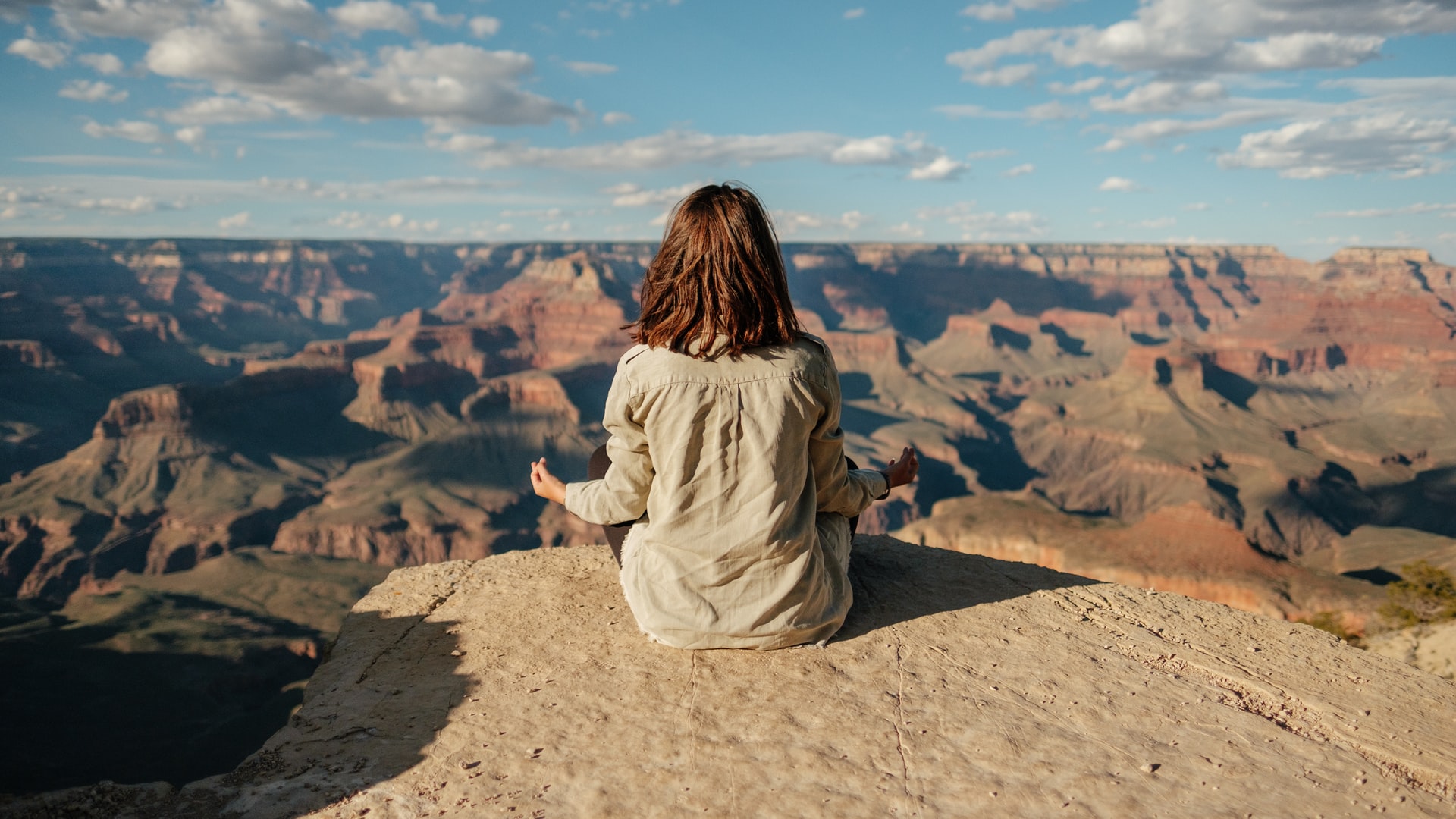
Body + Mind is reader-supported. We may earn an affiliate commission when you buy through some of the links on our site.
2020 may earn the dubious recognition as the Year of High Anxiety. If you are dealing with stress and anxiety like many, what can you do to find relief?
Meditation for anxiety may help. This exercise helps break the cycle of racing thoughts and forces you to examine your underlying beliefs and attitudes. Are you looking to start your practice? The tips and mini-meditations below can help you cope on those days when it all seems too much.
According to a meta-analysis in the New England Journal of Medicine, multiple studies confirm that meditation helps ease anxiety and treat chronic pain. How does the magic work?
The answer lies in the connection between mind and body. Your underlying thoughts create physiological responses — think of how your jaw clenches when you feel tense.
Unfortunately, this process can create a negative feedback loop that reinforces anxiety. When what you experience in reality differs from what your brain expects, you feel an urgent need to behave in ways that restore homeostasis, or a sense of normalcy.
In the modern world, though, innate urges might prove impossible to meet. Maybe you desperately need a break, for example, but taking time off work results in coming up short on rent. The conflict between what you need and what you must do creates stress, manifesting in the body.
The physiological sensations arising from this conflict reinforce your feelings of anxiety. If you develop back pain or headaches from stress, it makes it more challenging to focus on your work, increasing your tension. Around and around you go.
Meditation draws you back into the present moment, breaking this negative feedback loop. Now that you understand the science, how can you get started?
If you never used meditation for anxiety before, consider doing so under the guidance of a trained therapist, at least at first. They can help you use the practice to recognize when to practice acceptance or gather energy to inspire positive change.
However, if you don’t have access to health care services due to a lack of coverage or time factors, you can begin the practice independently. Here are eight meditation exercises for anxiety that you can practice anywhere:
Your breath has the power to interrupt the physiological processes that make you freak. Learn how to use 2-to-1 breathing to activate your parasympathetic nervous system — the half responsible for the relaxation response. All you need to do is inhale deeply, pause for a moment, then exhale for twice as long as you drew breath.
Writing is a mindfulness activity, and when no one reads what you pen, you don’t have to worry about pesky grammar and spelling errors. Jot down a question — preferably, one that goes to the core of what’s bothering you.
Next, let yourself free-write. Don’t censor yourself or worry whether your words make sense. Often, the act of making your ideas concrete interrupts spiraling panic and helps you plot an actionable course forward.
Many people experience a mood boost when they go outdoors — the fresh air alone may ease anxiety. Elevate the experience by taking a mindfulness walk.
As you stroll, focus on the way your feet feel when they strike the pavement. Scan your senses — what do you see and hear? How does the air feel against your face?
If you have chronic pain, consider making mindfulness body scans an integral part of your daily repertoire. When achiness distracts you, stop and focus on your breath.
Then, starting with your toes, work your way up your body, taking note of any tight or sore areas. Breathe into these spaces while mentally saying, “Relax.” Doing so may get your muscles to unclench and eventually ease the inflammation resulting in the ache.
You can find mini-mindfulness podcasts online — use them on your work breaks to reprogram your mind and restore a more positive state. Many take as few as five minutes, leaving you another 10 to stroll and make water-cooler gossip.
YouTube is another free resource. Artists such as Michael Sealey present free guided meditations you can stream to adjust your mindset. Please use caution — listening while driving could result in distraction and an accident.
Do you have a mantra? If not, why not work on writing one today? If you feel anxiety due to overwhelming uncertainty, you might say, “I have the strength to overcome life’s challenges.” If tense interpersonal relationships have you on edge, try, “I cannot control others, but I can manage my behavior.”
Here’s a meditation for the sweet-tooth crowd. Grab a piece of chocolate and take your time eating it. Turn off all distractions — no scrolling social media or chewing while working. Instead, sniff and nibble your treat before putting it in your mouth. Let it dissolve on your tongue while you savor the sugary delight.
Remember the negative feedback loop where your physical responses increase your stress? Reverse that effect by smiling. According to Dr. Isha Gupta, a neurologist at IGEA Brain and Spine, this action causes a chemical reaction in your brain, spurring the release of feel-good chemicals like dopamine and serotonin.
If you feel on edge with the chaos of 2020, meditation for anxiety can help. Try the tips above to restore calm.
Your email address will only be used to send you our newsletter, and at any time you may unsubscribe. For more information, see our Privacy Policy.